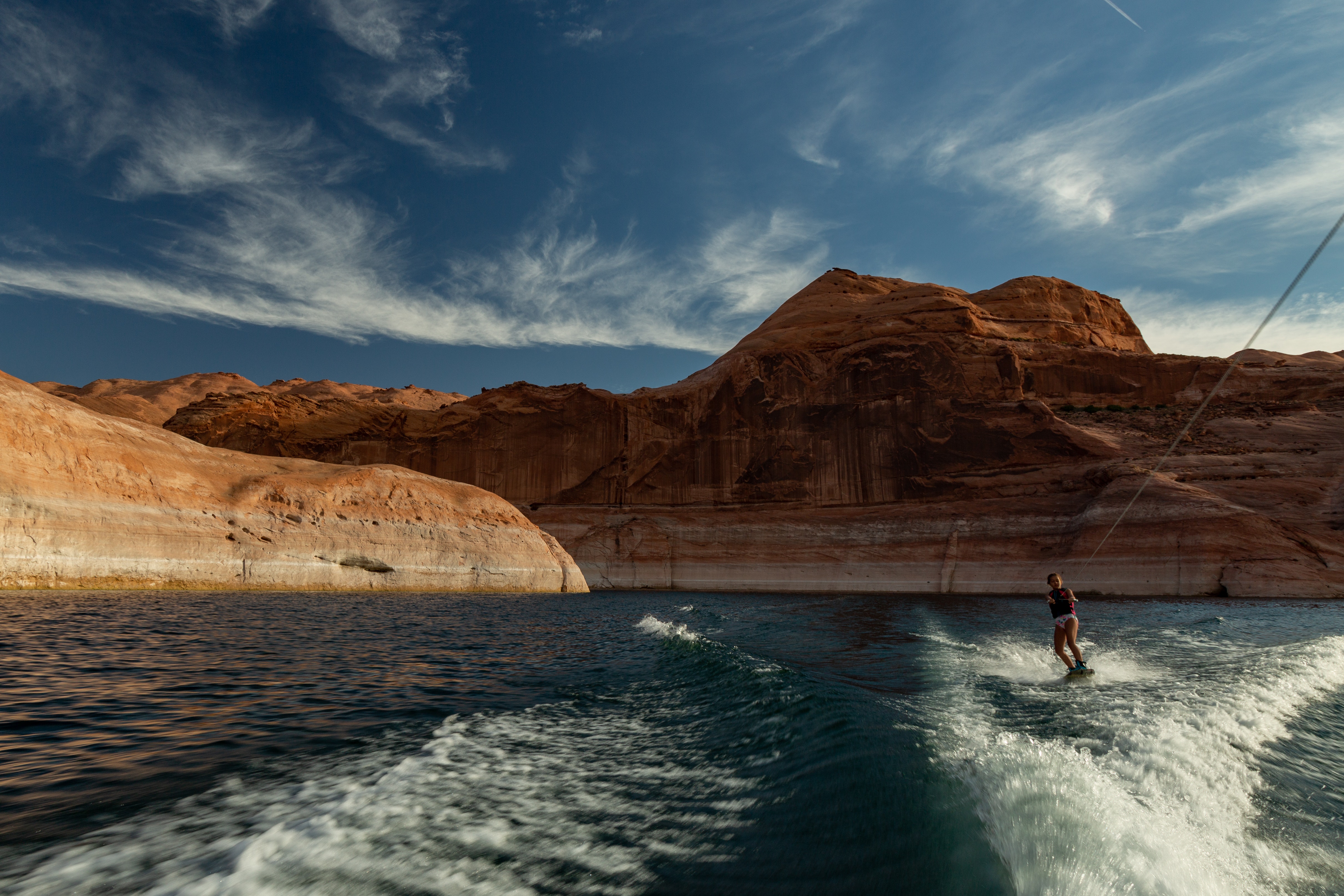Attention boaters of larger vessels and houseboats! After months of closure, we have exciting news: Lake Powell's popular Bullfrog North Ramp is finally reopened! So, get ready to hit the water with ease and make up for lost time. Read on to discover all the details and start planning your next adventure on the lake.
The closure was due to the low water levels caused by the ongoing drought in the region. The lack of precipitation in the Western United States led to a decrease in the amount of water flowing into Lake Powell, which is one of the largest reservoirs in the whole country. As a result, the lake's water levels dropped to historic lows, which makes it a lot more difficult for larger boats to launch from the ramp.
However, recent rain and snowmelt have raised Lake Powell by nearly 10 feet, allowing for the reopening of the Bullfrog North ramp. The National Park Service has been closely monitoring the water levels and decided that it was safe to allow houseboats and large vessels to use the ramp again.
This news is particularly exciting for those who own or rent houseboats, which are popular on Lake Powell. These large, floating homes can accommodate multiple people and provide a unique way to experience the lake. With the reopening of the Bullfrog North Ramp, houseboat owners and renters can now easily access Lake Powell and everything it has to offer.
The reopening is also great news for boat owners with larger vessels, such as motor yachts and pontoon boats. These types of boats require more space to launch and are often unable to use the smaller ramps. But with the Bullfrog North Ramp now open, these larger boats can once again be launched and enjoyed on the lake.
It's important to note that while the ramp is open, boaters should still be cautious when launching a large boat or houseboat into the water. Remember to take your time, be prepared, and stay focused on the task at hand.
Here are a few more tips and tricks to launch your boat like a pro:
Prepare your Boat
Before you launch your boat, make sure it's ready to go. This means checking all of the fluids, making sure the batteries are charged, and ensuring that all of the safety equipment is on board and in good condition.
Don't Forget the Drain Plug
This may seem like a no-brainer, but it's easy to forget about the drain plug when you're in a hurry. Make sure the plug is securely in place before you back the boat down the ramp.
Check the Ramp
Before you back your boat down the ramp, take a few minutes to assess the situation. Make sure the ramp is in good condition and check for any signs of damage that could affect your launch.
Use a Spotter
When you're backing your boat down the ramp, it can be difficult to see what's behind you. This is where a spotter comes in handy. Have someone stand behind you and guide you down. They can let you know if you're too close to the edge or if you need to adjust your angle.
Launch Slowly
Once you're ready to launch, do so slowly and carefully. You don't want to create a large wake that could damage other boats or the dock. Take your time and make sure the boat is safely in the water before you pull away from the ramp.
Head over to the SkiSafe blog for even more tips, tricks, and resources on all things boating!

